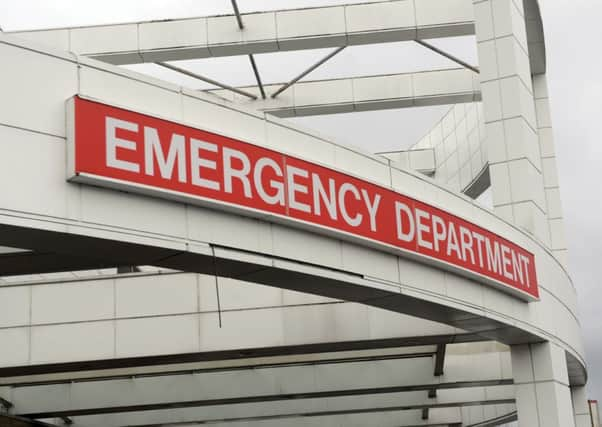Comment: Educate public to relieve A&Es pressure


With GP surgeries not open again until Monday – or Tuesday if you’re unlucky enough to fall ill on a Bank Holiday weekend – people face a difficult decision about what they should do.
Obviously the very seriously ill will go to hospital. But what about those where the urgency is less obvious – a dodgy rash, for example, which could be nothing, but could be a sign of something more sinister.
Advertisement
Hide AdAdvertisement
Hide AdOr various aches and pains which might go away, but which might get worse.
It seems that in some cases patients decide they cannot wait until the weekend is over.
But rather than call the out-of-hours service NHS 24 for advice, they turn up in A&E hoping for instant solutions to their medical woes.
But the problem is that our A&Es are growing ever busier, and waiting times are suffering as a result. While it used to be the case that few patients would wait longer than four hours before being seen, some are now experiencing waits of ten, 15 or even 20 hours as hospitals struggle to deal with the numbers coming in.
Often it is want of a bed elsewhere in the hospital which causes hold-ups in A&E.
In efforts to reduce pressure on A&E and make sure patients get the most appropriate care, the Scottish Government has ordered the roll-out of a scheme used in some areas where patients who really shouldn’t be in A&E are referred on elsewhere for care, such as the out-of-hours GP service.
It is thought around 16 per cent of A&E patients should not really be there, coming in with problems such as toothache and ingrown toenails.
Anyone who has ever been in A&E will have seen some people who make you wonder “do they really need to be here?”
Advertisement
Hide AdAdvertisement
Hide AdBut the issue is convincing them that there is somewhere else to turn. In part, the problem is due to lack of education of patients.
Some may see A&E as the default option for any medical concern, in some cases even when GP services are still open.
Others may lack trust in other out-of-hours services. They may remember past concerns about the NHS 24 service, where patients were not dealt with appropriately with devastating consequences.
The challenge now is to persuade the public to make the best use of the health services available, and build confidence that they will receive the care they need when they need it.
SEE ALSO